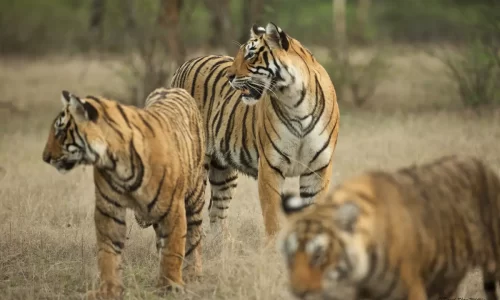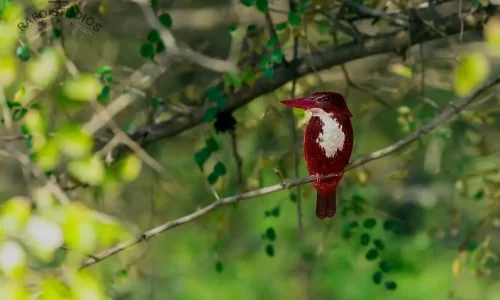Wildlife photography is a thrilling yet challenging pursuit that allows you to capture the beauty, power, and grace of animals in their natural habitats. It requires a blend of technical knowledge, patience, and a deep understanding of animal behavior. Whether you’re a seasoned photographer or just starting these wildlife photography tips will help you improve your shots and create compelling, breathtaking images that showcase the magnificence of the natural world.
1. Know Your Subject: Study Animal Behavior
The key to capturing great wildlife photos lies in understanding the behavior of the animals you’re photographing. Spend time observing them before you even pick up your camera. Knowing the animals’ habits—when they are most active, where they feed, how they communicate, and the types of movements they make—will allow you to predict their actions and capture the perfect shot.
For instance, birds might be most active at dawn or dusk, and predators may be more active during certain times of the day when they hunt. Patience is crucial in wildlife photography, as waiting for the right moment can make the difference between a good shot and an unforgettable one.
2. Use the Right Equipment for Photography
To excel in wildlife photography, having the right gear is essential. Here are the must-have tools:
Camera: A DSLR or mirrorless camera with fast autofocus is ideal. Cameras with higher megapixels will allow you to crop in on animals without losing too much detail.
Lens: A telephoto lens (200mm, 300mm, or longer) is essential for wildlife photography, allowing you to get close to animals without disturbing them. A zoom lens can give you flexibility when animals move or the environment changes.
Tripod/Monopod: A tripod or monopod can help stabilize your shots, especially when using a long lens. It helps reduce camera shake, ensuring your images are sharp and clear.
Memory Cards and Batteries: Wildlife photography often involves long waits and quick action shots. Carry extra memory cards and fully charged batteries to avoid missing a moment.
3. Use the Right Settings: Exposure and Focus
Wildlife photography is often done in unpredictable lighting conditions, so mastering your camera’s settings is vital for getting sharp, well-lit images.
Shutter Speed: To freeze the action of fast-moving animals, use a fast shutter speed (1/1000 second or faster). For birds in flight or predators chasing prey, you’ll need to capture the movement without blur.
Aperture: A wide aperture (f/2.8, f/4) allows more light and helps create a shallow depth of field, isolating the animal from the background and making it stand out. This effect is particularly useful when photographing animals in busy environments.
ISO: Depending on the lighting, you may need to increase your ISO to ensure your image is bright enough. However, higher ISO can introduce noise, so balance it with your shutter speed and aperture to avoid grainy images.
For animals in motion, particularly fast-moving species, tracking focus is key. Use the continuous autofocus mode (AI Servo on Canon or AF-C on Nikon) to keep your subject in focus while moving.
4. Patience and Timing: Anticipate the Action
Wildlife photography requires immense patience. Animals don’t always cooperate with photographers, so you need to be prepared to wait for long periods in quiet surroundings. But patience pays off when you capture that rare, dynamic moment—whether it’s a lion stalking its prey, a bird in mid-flight, or a giraffe grazing peacefully in the golden light of dawn.
Knowing when and where to shoot is equally important. Early mornings and late afternoons often offer the best lighting—soft, warm light that adds richness to your images without the harsh shadows of the midday sun. These times are also when animals are typically most active.
5. Respect Wildlife and the Environment
Ethics in wildlife photography are of paramount importance. Always respect the animals and their habitats. Avoid getting too close or disturbing the creatures in their natural environment. Wildlife photography should not come at the expense of an animal’s safety or well-being.
Maintain a safe distance and use a long lens to ensure you’re not causing stress to the animal. Avoid loud noises, sudden movements, or chasing animals for a shot. Additionally, respect local regulations and conservation efforts. Some areas may have restrictions on photography, especially in protected habitats.
6. Composition: Frame the Shot Creatively
Wildlife photography isn’t just about capturing a subject; it’s about telling a story. Composition plays a key role in this.
Rule of Thirds: Position the animal off-center, aligning it along one of the gridlines to create a more dynamic and balanced composition. Allow some space in the direction the animal is facing, giving your image room to “breathe.”
Fill the Frame: When possible, get closer to your subject (without disturbing it) to fill the frame with your subject. A tight crop can bring attention to the details of the animal’s face or body.
Background: Pay attention to your background, especially when photographing animals in busy environments. A cluttered background can detract from your subject. Look for clean, simple backgrounds that help the animal stand out.
Natural light is your best friend in wildlife photography. The warm glow of the golden hour can create dramatic and flattering lighting for your subjects. However, even midday sun, when managed properly, can lead to striking images with high contrast and sharp shadows.
7. Post-Processing: Enhance Your Shots
Once you’ve captured your images, post-processing can help you bring out the full potential of your wildlife photos. Programs like Adobe Lightroom and Photoshop allow you to adjust exposure, contrast, and sharpness, remove distractions, and enhance colors. However, be cautious about over-editing—wildlife photography should aim to present an authentic, natural look.
In post-processing, consider fine-tuning the background blur to make the animal pop more and adjusting the highlights to emphasize details in the animal’s fur or feathers. Remember that the goal is to enhance the natural beauty of your subject, not distort it.
Conclusion: Capturing the Soul of the Wild
Wildlife photography is a rewarding but demanding art form. It requires patience, technical skill, and respect for the natural world. By following these tips—understanding animal behavior, using the right equipment and settings, composing with care, and post-processing thoughtfully—you can create powerful images that not only showcase the beauty of wildlife but also inspire others to appreciate and protect these magnificent creatures. So, grab your camera, venture into the wild, and let the adventure of wildlife photography begin!




